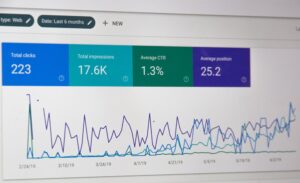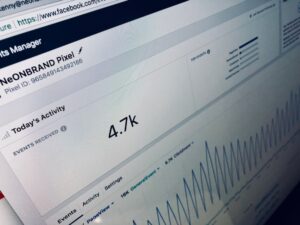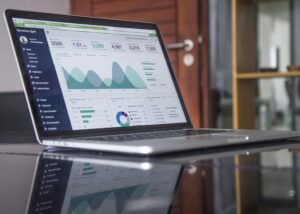Here is a step-by-step process to maximising content impact:
By following this step-by-step process, businesses can leverage content analytics and reporting to enhance their content strategies, make data-driven decisions, and achieve marketing objectives.
An essential guide to content analytics and reporting, including key metrics, the importance of tracking content performance, tools for analytics, interpreting data, content reporting dashboards, best practices, and the value of content reporting in improving content strategies.

Content analytics and reporting are indispensable components of modern marketing strategies, providing organisations with valuable insights to enhance their content effectiveness and achieve marketing objectives. By tracking key metrics, interpreting data, and leveraging reporting tools, businesses can make informed, data-driven decisions to refine their content strategies and drive meaningful improvements in their content performance.
Content analytics encompasses a wide array of key metrics that offer crucial insights into the effectiveness of content marketing efforts. These metrics include traffic indicators such as website visits, unique visitors, and page views, as well as engagement parameters like bounce rate, time on page, and conversion rates. Furthermore, social metrics such as likes, shares, and comments on various platforms also play a pivotal role in assessing the resonance of content with the target audience. For instance, by analysing the bounce rate, businesses can identify the content pieces that fail to engage visitors effectively, prompting them to re-evaluate and refine their content strategy.

Tracking content performance is vital for businesses to understand the impact of their content marketing initiatives and make necessary adjustments to improve outcomes. By monitoring key metrics, organisations can gain insights into various aspects such as brand awareness, customer engagement, lead generation, and ultimately, sales. This information empowers content managers to make data-driven decisions and refine their content strategies for better results. For example, by tracking conversion rates, companies can assess the effectiveness of their content in driving desired actions from the audience, enabling them to optimise their content for improved performance.

In the realm of content analytics, organisations have access to a plethora of tools and platforms that offer comprehensive solutions for tracking, measuring, and reporting content performance. ServiceNow's Content Automation Analytics, HubSpot's Sales Content Analytics tool, and Moz Pro are prime examples of such tools. These platforms provide actionable insights that enable content managers to refine and enhance their content strategies, ultimately contributing to improved content effectiveness and performance. For instance, ServiceNow's Content Automation Analytics offers a robust suite of features that empower organisations to gain in-depth insights into their content performance, allowing them to make informed decisions to optimise their content strategies.

Interpreting content analytics data involves a multifaceted approach that begins with setting clear goals and objectives for content marketing initiatives. It necessitates measuring important elements, understanding the impact of content marketing efforts, and aligning content creation with the established goals. Additionally, a deep understanding of audience needs and preferences is imperative to create content that resonates with the target demographic. By employing advanced analytics tools, businesses can identify content consumption patterns, enabling them to tailor their content to meet the specific needs and preferences of their audience.
Modern content performance reports often take the form of online dashboards, providing an intuitive and accessible way to assess the success and return on investment of content in real-time. These dashboards contain critical performance metrics such as content drilldown, content quality control, reader insights, and social media content performance, offering a comprehensive view of all content-related initiatives. For example, by utilising content quality control metrics, organisations can identify areas for improvement in their content creation processes, leading to enhanced content quality and performance.
Effective content reporting involves adhering to best practices such as aligning reports with goals, selecting relevant key performance indicators (KPIs), and visualising KPIs to facilitate clear understanding and decision-making. It also entails leveraging automation and real-time data to ensure that content reports provide actionable insights for refining content strategies and enhancing content return on investment. By following these best practices, organisations can streamline their reporting processes and derive meaningful insights to drive improvements in their content performance.
Content reporting serves as a valuable tool for content managers, providing them with the means to measure the success of their content efforts and make data-driven decisions to enhance their content strategies. It equips organisations with the knowledge to create informed decisions, develop targeted strategies, and improve content return on investment, brand awareness, and client satisfaction. By utilising content reporting, businesses can identify trends in content performance and make informed decisions to optimise their content strategies for better results.
Data-driven decisions based on content analytics can significantly contribute to creating high-performing content, boosting content return on investment, and increasing brand awareness and loyalty. By thoroughly analysing content performance, organisations can keep clients and teams informed, leading to the development of effective and targeted content strategies tailored to audience preferences. For instance, by leveraging content analytics, businesses can identify content gaps and opportunities, enabling them to tailor their content strategy for maximum impact.
Key metrics in content analytics play a pivotal role in providing actionable insights to content managers, enabling them to make informed decisions and refine their content strategies. Traffic metrics, including website visits and unique visitors, offer insights into the reach and visibility of content among the target audience. Engagement metrics such as bounce rate and time on page provide valuable information about the effectiveness of content in retaining and engaging visitors. Moreover, social metrics like likes, shares, and comments offer insights into the resonance of content with the audience and its virality on social platforms. By leveraging these key metrics, content managers can gain a comprehensive understanding of their content performance and make necessary adjustments to improve outcomes.

The availability of advanced analytics tools and platforms has revolutionised the way organisations track and measure their content performance. These tools, such as Moz Pro and HubSpot's Sales Content Analytics tool, offer in-depth analytics capabilities that enable content managers to gain valuable insights into their content effectiveness. For instance, Moz Pro provides a suite of SEO essentials, including custom data solutions and AI models, empowering businesses to derive actionable insights for refining their content strategies and enhancing content performance. Similarly, HubSpot's Sales Content Analytics tool offers robust reporting features that facilitate comprehensive analysis of content performance, aiding businesses in making informed decisions to optimise their content strategies.
Content reporting dashboards serve as powerful tools for assessing content success and return on investment in real-time. These dashboards, such as those offered by ServiceNow's Content Automation Analytics, provide intuitive and accessible interfaces for content managers to evaluate the performance of their content initiatives. By utilising these dashboards, organisations can gain a comprehensive overview of their content performance, identify trends, and make informed decisions to enhance their content strategies for better results. For example, ServiceNow's Content Automation Analytics offers a range of features, including content quality control and social media performance metrics, empowering businesses to refine their content strategies and maximise their content impact.
Interpreting content analytics data is a critical process that directly impacts the effectiveness of content strategies. By setting clear goals and objectives, businesses can align their content creation with the established objectives and measure the impact of their content marketing efforts. Additionally, understanding audience needs and preferences is essential for creating content that resonates with the target demographic and drives meaningful engagement. For instance, by utilising advanced analytics tools, organisations can gain insights into audience behaviour and preferences, enabling them to tailor their content to meet specific audience needs and preferences, ultimately enhancing the effectiveness of their content strategies.
Adhering to best practices in content reporting is instrumental in driving improvements in content strategies and performance. By aligning reports with goals and selecting relevant KPIs, content managers can ensure that their reporting provides actionable insights for refining content strategies and enhancing return on investment.Visualising KPIs and leveraging automation and real-time data are essential for streamlining the reporting process and deriving meaningful insights that drive improvements in content performance. For example, by following best practices in content reporting, organisations can streamline their reporting processes, gain comprehensive insights into their content performance, and make data-driven decisions to optimise their content strategies for better results.

In conclusion, content analytics and reporting are integral components of successful content strategies, providing businesses with valuable insights to refine their content effectiveness and achieve marketing objectives. By leveraging the tools, best practices, and value of content reporting, organisations can enhance their content strategies and drive meaningful improvements in their content performance. Through comprehensive content analytics and reporting, businesses can gain a deeper understanding of their content performance, make data-driven decisions, and ultimately drive meaningful improvements in their content strategies.
This document is a comprehensive guide to content analytics and reporting, focusing on the key metrics, tracking content performance, tools for analytics, interpreting data, content reporting dashboards, best practices, and the value of content reporting in improving content strategies. It emphasises the importance of data-driven decisions and provides insights into how organisations can leverage analytics to enhance their content effectiveness and achieve marketing objectives. The document also highlights the role of key metrics, advanced analytics tools, and content reporting dashboards in tracking and measuring content performance. It concludes by emphasising the impact of content analytics and reporting on content strategies and the value of data interpretation and best practices in driving improvements in content effectiveness.